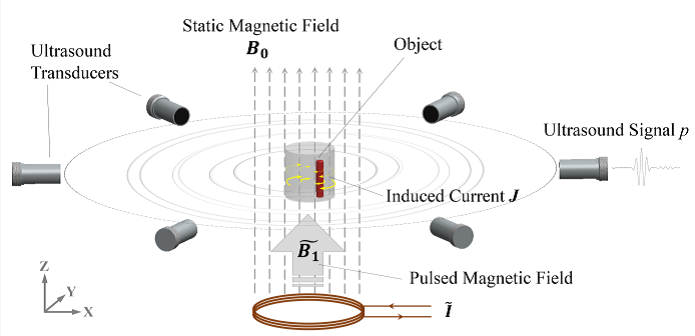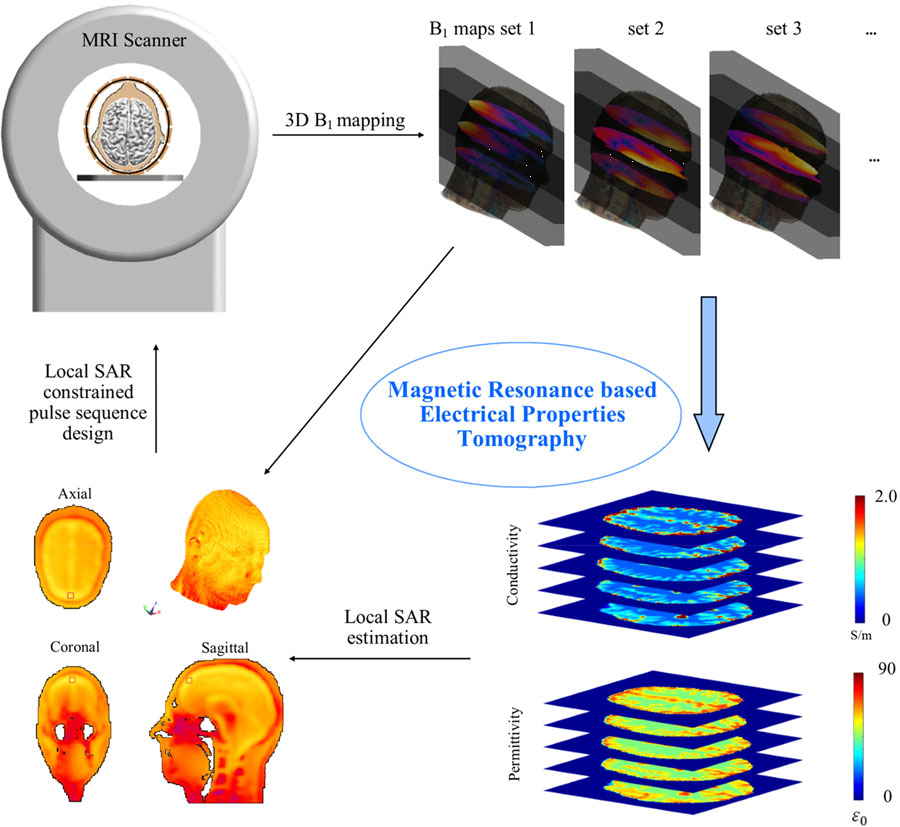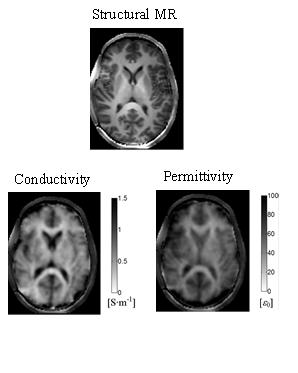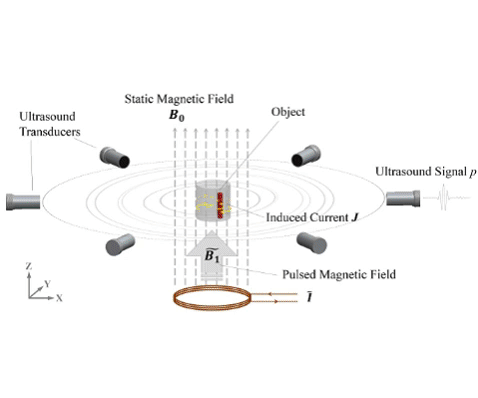Bioimpedance Imaging
Magnetoacoustic Tomography
Magnetoacoustic Tomography with Magnetic Induction (MAT-MI) (Xu & He, 2005) was invented in the lab in 2005. Harnessing the Lorentz force, this novel imaging modality is designed for bioimpedance imaging at a radio-frequency range by integrating magnetic stimulation with ultrasound detection. MAT-MI is able to provide an outstanding spatial resolution (millimeter) for the electrical conductivity imaging, and a sufficient imaging depth with an intrinsic immunity to the “shielding effect” by the superficial low-conductive tissues. We have demonstrated high-frequency stimulation/detection for the first in vivo breast cancer imaging (Yu et al. 2016). Investigations have also been carried out on magnetoacoustic imaging involving nanoparticles with an enhanced contrast (Hu & He, 2012; Mariappan et al. 2016).

The conceptual model of MAT-MI (from Yu et al., IEEE Trans. Med. Imaging 2016)
Magnetic Resonance based Electrical Properties Tomography
Magnetic Resonance based Electrical Properties Tomography (MREPT or EPT) is a novel technology to noninvasively retrieve tissue electrical conductivity and permittivity from an MRI scan. This is accomplished by measuring the radiofrequency electromagnetic field distribution inside an MRI scanner, and solving Maxwell’s Equations to decipher the underlying electrical properties (Zhang et al., 2010; Zhang et al., 2013). We have been developing advanced MREPT technologies based on a multi-channel RF coils array and a powerful 7T MRI system, aiming to break the bottlenecks of conventional EPT methods, such as electromagnetic field assumptions and tissue boundary artifacts. It has been demonstrated in our recent work that accurate brain electrical properties can be imaged in vivo in high resolution and high quality (Liu et al., 2015). We are actively applying our EPT technology to address biomedical issues, such as cancer imaging (Liu et al., 2017) and quantification of local heat generation during an MRI scan (Zhang et al., 2013; Zhang et al., 2014). Further improvements on the sensitivity and accuracy of EPT are on the way, leading to its ultimate establishment as a powerful tool in both clinical practice and scientific exploration.


Electrical properties tomography and its application in imaging tissue electrical properties and predicting subject-specific absorption rate (from Liu et al., IEEE Trans. Biomed. Eng., 2017).
